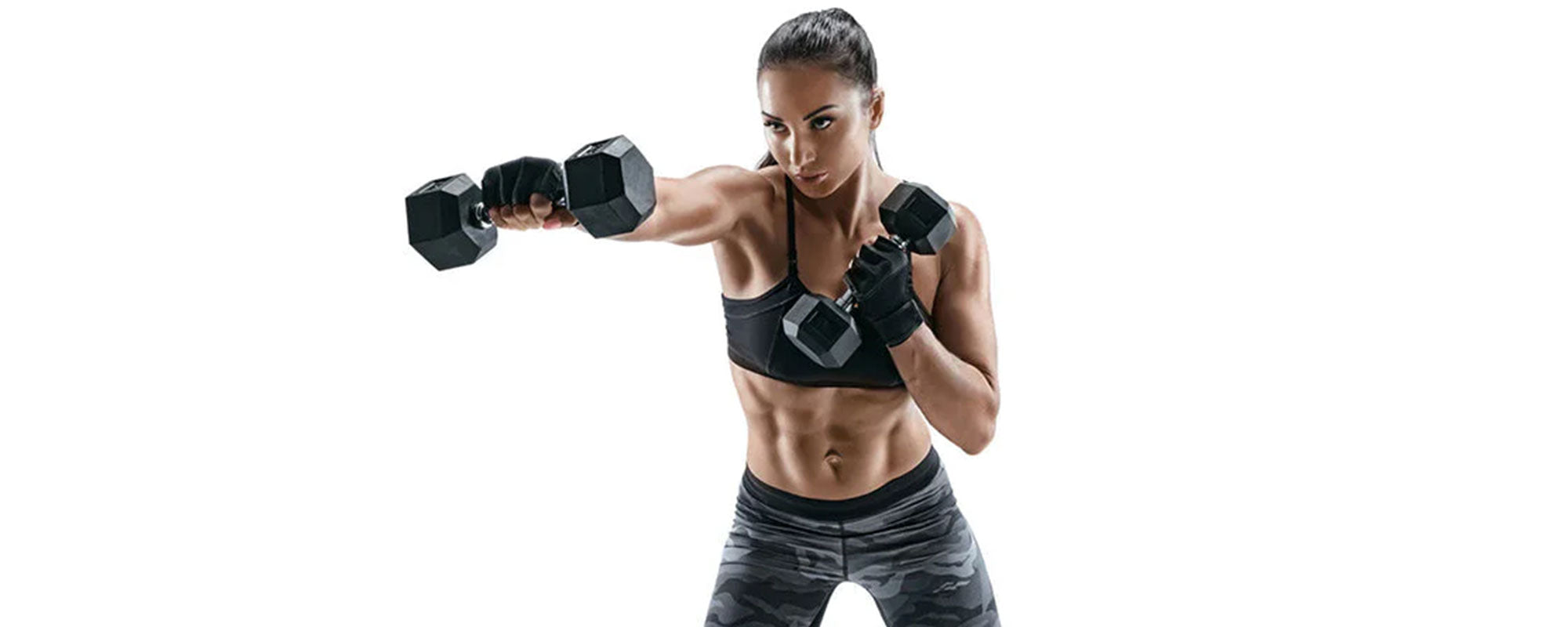Table of content
In this article, we'll go over how to create and execute various forms of circuit training to increase strength and conditioning for boxing.
1. Facts Regarding Circuit Training
- Boxing circuit training can be a great time-efficient way to improve strength and conditioning.
- Different boxing circuit training workouts can improve a range of physical characteristics.
- Must consider some key movements while designing circuit training for boxing.
2. Why is Circuit Training Important for Boxing?
However, circuit training can be extremely effective to target a group of muscles or a range of physical characteristics within a short timeframe. Circuit training can help boxers increase their aerobic and anaerobic capacity, strength, speed, and endurance, as well as their ability to keep moving even when tired.
Circuit Training may Utilize to:
- Add extra conditioning to the boxing workouts
- Help athletes to gradually build training load if they have had some time off
- Help heavy athletes with a training
- Save time and target multiple adjustments
- Help an injured athlete in training
Although high-intensity interval running training is typically used to improve a boxer's fitness, circuit training can be used to add variety. This lessens the physical monotony that can occur when an athlete has massive training loads.
3. Boxing Circuit Training Routine
3.1. Circuit Training for Strength
When we need to reintroduce an athlete to training in a short amount of time, strength-based circuits are usually ideal. The best way is to keep the exercise basic with moderate intensity, to avoid making athletes excessively sore, keeping the high-quality movement.
To avoid placing athletes under excessive mechanical load we’ll generally use exercises such as Kettlebell Swings, TRX Rows, Goblet Squats, and Press Ups.
Strength-based circuit training for boxers can push athletes up to 75% of their maximum heart rate, making it a useful method to warm up for more intense conditioning later.
Exercises for Strength Circuit Training:
- Goblet Squats (10 repetitions)
- TRX Rows (10 repetitions)
- Press Ups (10 repetitions)
- Prisoner Reverse Lunges (8 repetitions each leg)
- Plank Rotations (8 repetitions on each side)
Perform all these exercises back-to-back, with 90 seconds rest in between circuits, and 4-5 sets.
3.2. Circuit Training for Conditioning
A circuit can be designed considering the effectiveness to get an athlete working with the maximum 90% heart rate to promote aerobic adaptations. If a boxer is currently too heavy to run at high intensities, adding extra conditioning exercises at the end of boxing sessions may be the best way to prevent injury risk.
When combining conditioning and ‘red-zone circuit – you need to:
- Select highly dynamic exercises to evoke increased heart rate responses
- Full body actions to fade away local muscular fatigue and increase heart rate responses
- Select exercises that are not technically demanding – increase the intensity and prevent injury
We’ll work out for 20-45 seconds, with the rest ratio of 2-3:1. A complete set will typically last for 3-5 minutes, and the recovery between sets is generally 60 seconds, to maintain a high HR response.
We’ve found that Tabata intervals (20 seconds training, 10 seconds rest) are a really useful tool for promoting high heart rates and achieving aerobic fitness adaptations. It is critical to tackling these circuits with a high level of focus and effort when performing them. After the circuit, it should feel like a 9/10 Rate to Perceived Exertion (RPE) or effort.
Exercises for Conditioning Circuit Training:
- Burpees: 20 seconds with 10 seconds rest (2 reps)
- Running of the place: 20 seconds with 10 seconds rest (2 reps)
- Mountain Climbers: 20 seconds with 10 seconds rest (2 reps)
- 15-meter shuttle runs: 20 seconds with 10 seconds rest (2 reps)
Perform 2 sets of each exercise back-to-back to achieve a 4-minute set. Repeat the conditioning circuit for boxing for 3-4 total sets, resting for 2 minutes in between sets.
3.3. Circuit Training for Core
Core strength is requisite for fast and forceful punching. It is omniscient, during punching force is transferred from the foot, through the lower body, core, shoulders, arms, and fists. Basically, this is known as the kinetic chain.
If the core isn’t b enough to transmit this force, the energy is lost or wasted, reducing the impact force at the end range of the punch. As it is understood that core muscle mass is highly associated with punching force. Therefore, to punch hard, we need to get a b core and preserve muscle mass around the core if our boxer is making weight over the course of a camp.
The deadlifts and squats are the key compound exercises performed at high weight loads, great for getting the core b. However, targeting maximum strength all the time can create muscle fatigue, posture, and mobility issues, and also affects your other strength qualities like speed.
For the same reason, we'll add core circuit training to the end of our strength workouts (2–4 times per week) to help build and preserve core strength and mass. Moreover, adding a core circuit to the end of training sessions as a finisher saves time.
When completing these circuits with our boxers, we'll typically employ bodyweight core exercises like leg lowers, plank rotations, plank rows, and sit-ups. With these, we can get some good time under high tension, which is great for improving strength for the core.
Exercises for Core Circuit Training:
- Straight Arm Straight Leg Sit Ups: 30 seconds with 10 seconds rest (3 – 4 sets)
- Leg Lowers: 30 seconds with 10 seconds rest (3 – 4 sets)
- Plank with Arm Reach: 30 seconds with 10 seconds rest (3 – 4 sets)
- Rotational Plank: 30 seconds with 10 seconds rest (3 – 4 sets)
- Supine ISO Holds: 30 seconds with 10 seconds rest (3 – 4 sets)
3.4. Circuit Training for Mobility
Mobility and movement circuits are often encouraged during the boxer’s active recovery sessions. The exercises included are very low in intensity and can prevent dysfunction and tightness which can occur from high boxing training loads. Mobility exercises are beneficial to elevate your heart rate and improve your blood flow to areas that are often sore and tight. After performing a mobility circuit, boxers usually feel loose and re-energized.
Exercises for Mobility Circuit Training:
- Shoulder Mobility: Windmills (10 repetitions on each side).
- Thoracic Extensions: Foam Roller (10 repetitions)
- Squat to Press: (10 Repetitions)
- Spiderman Rotations: (6 repetitions on each side)
- Banded Hip Flexor Floss: (8 Repetitions on each side)
- Lateral Lunge and Rotate: (8 Repetitions on each side)
4. Limitations of Circuit Training
Despite its advantageous effects, circuit training can have some limitations.
When multiple qualities are targeted at the same time, the physiological adaptations that are being sought can become muddled and limited. At high heart rates, for example, we may find it difficult to lift with enough force and intent to improve strength and speed. Similarly, if we lift heavier loads, we may find it difficult to work for long enough to reach the red zone, where aerobic fitness adaptations occur.
Athletes who are extremely fit often have trouble getting into the red zone during conditioning circuits. When a boxer is in better shape, we still prefer high-intensity interval running. When boxers first return to camp and are heavier and not at peak fitness, we'll use circuits.
Exercise technique can be affected by performing exercises in conditioning circuits, especially when fatigue sets in. For example, as an athlete's concentration begins to wane, we frequently see burpees performed with poor landing mechanics on the final round of a conditioning circuit.
This can put you at risk of getting hurt. To avoid increasing the risk of injury, it's critical to focus on maintaining good technique and form even at high heart rates.












Leave a comment
This site is protected by hCaptcha and the hCaptcha Privacy Policy and Terms of Service apply.